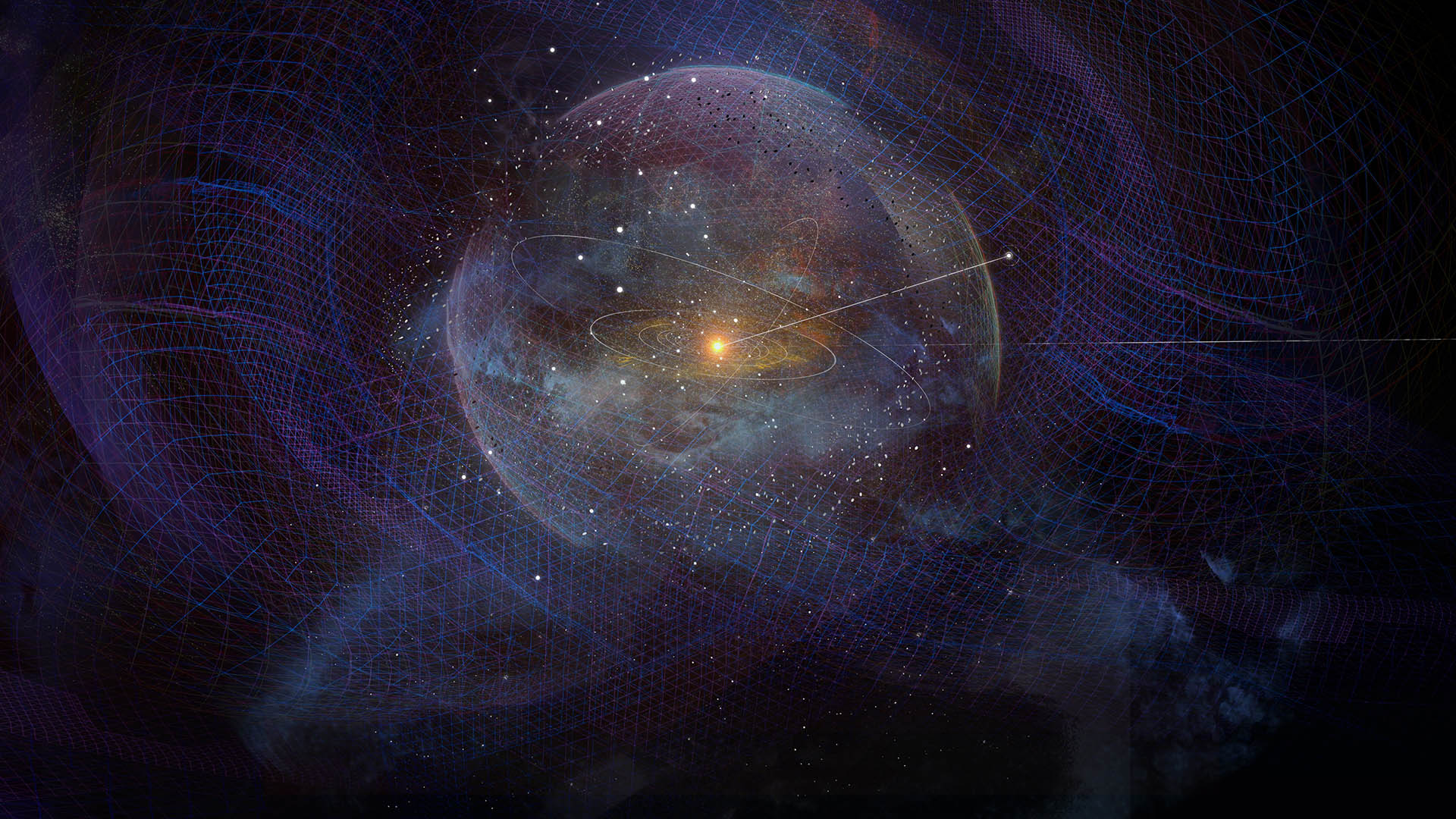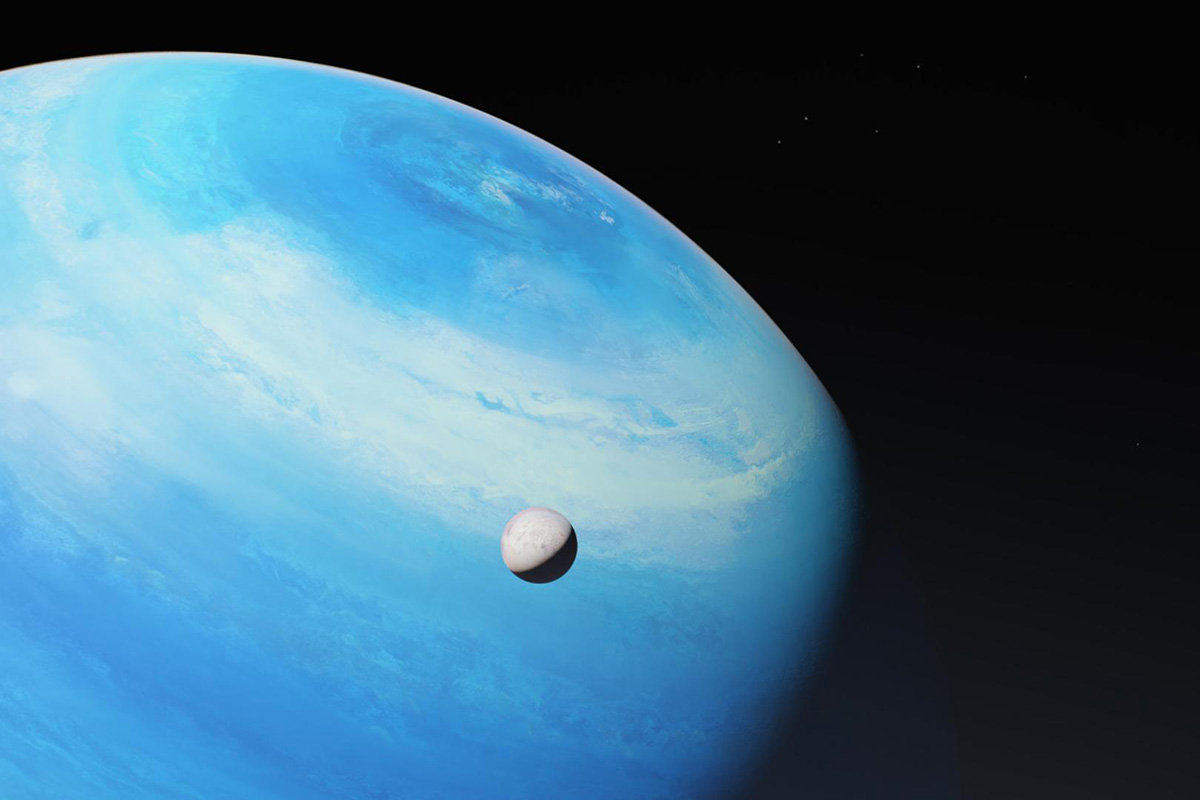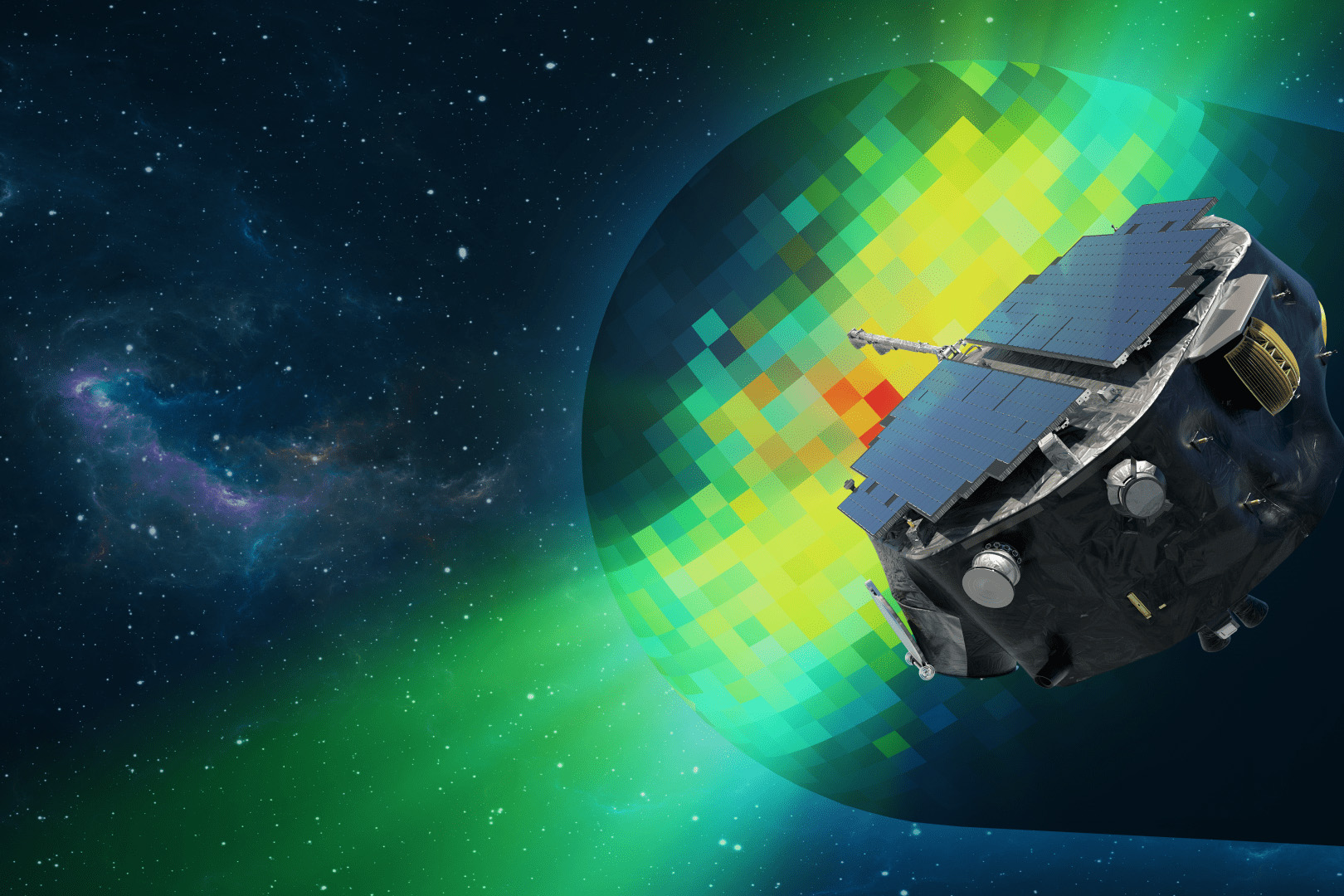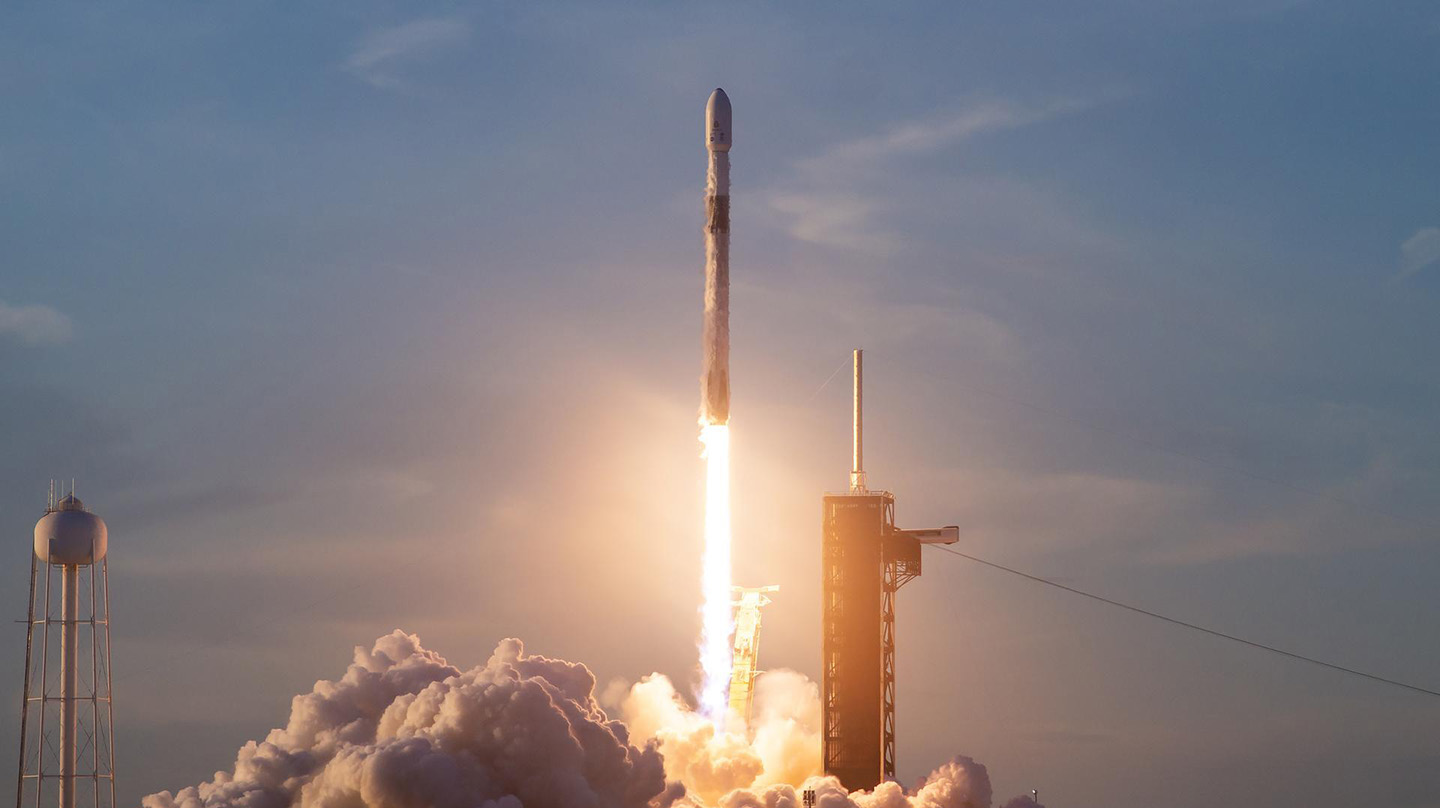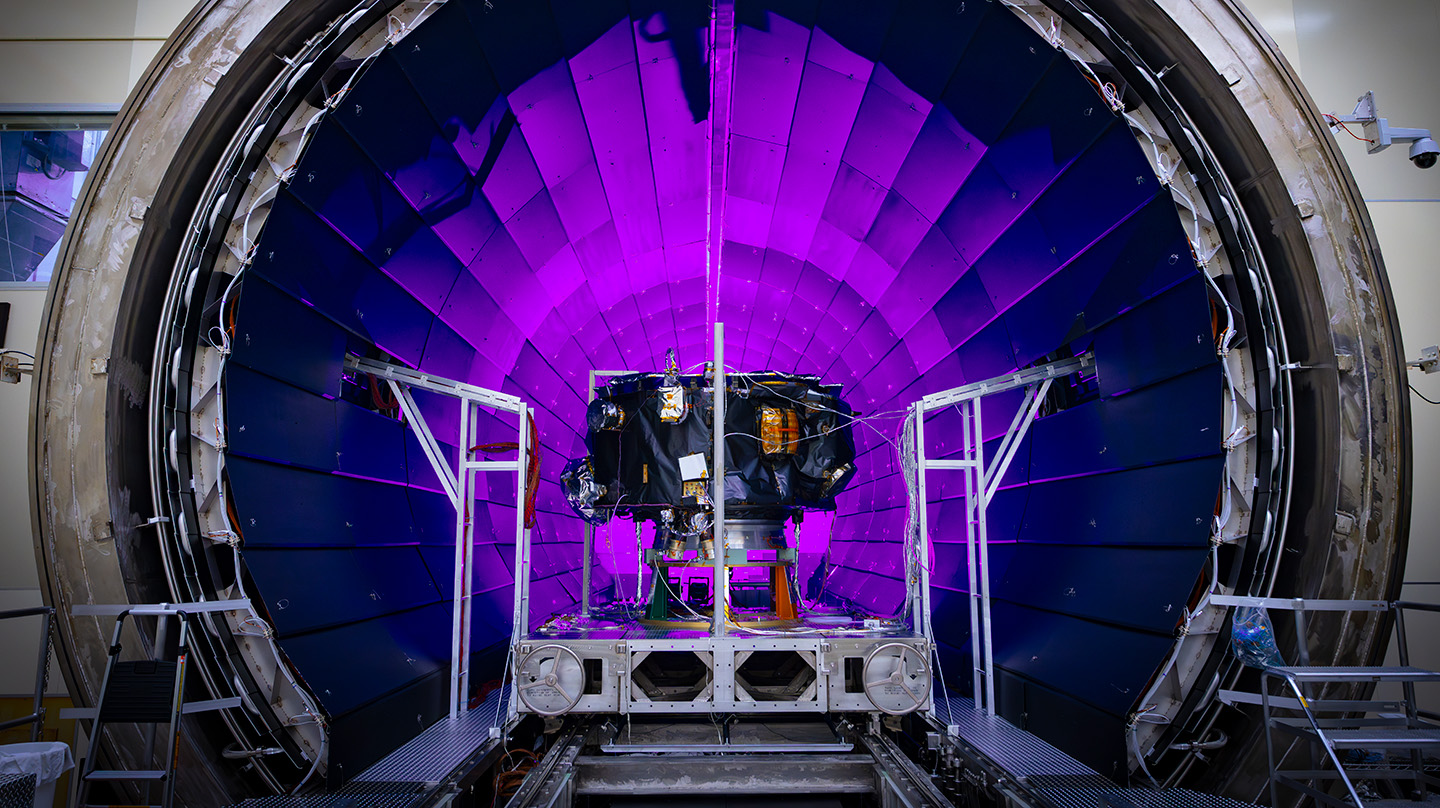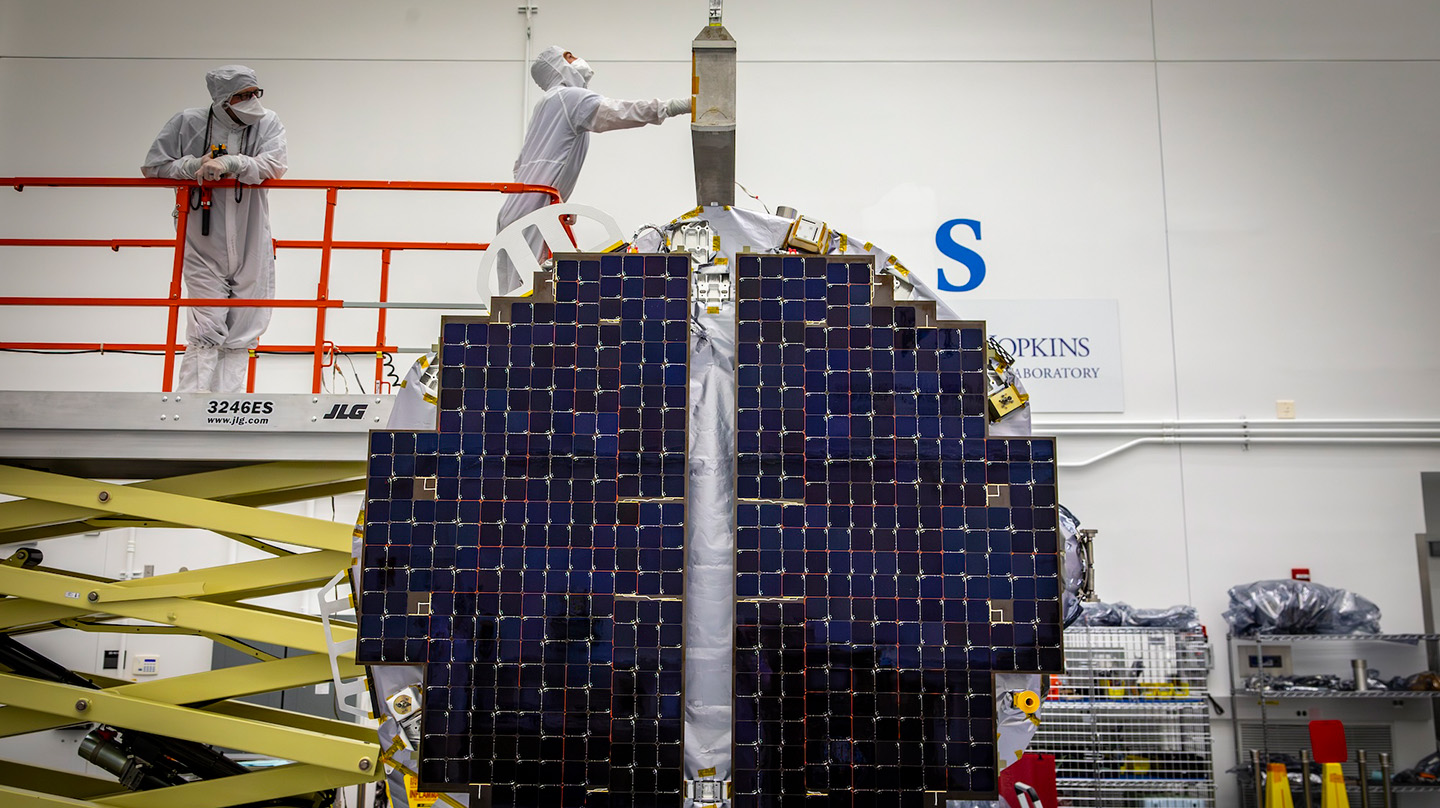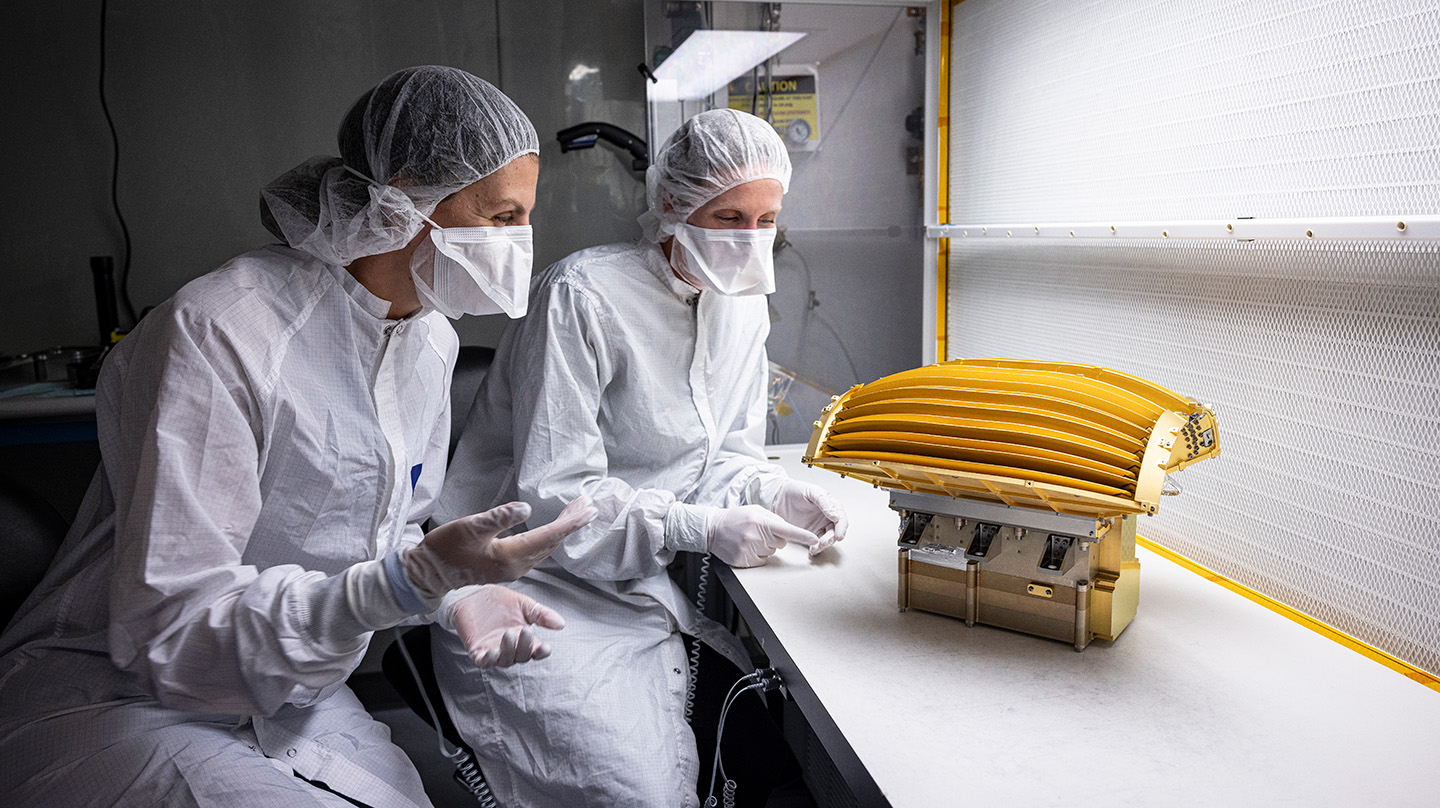Exploring Outside the Solar System
The space between the stars, just beyond our solar system, is filled with gas, plasma, dust, cosmic rays, and magnetic fields. The interstellar medium offers exciting clues to how neighboring stars and the Sun interact.
Some 11 billion miles from the Sun, at the edge of the solar system, is the interstellar medium, a vast region of space filled with the dust and gas that gives rise to stars and planets and the cosmic rays that massive stars release in their last, explosive breath. APL is committed to understanding how our solar system interacts with this region, building one of the instruments on Voyager that revealed where the edge of the solar system lies, as well as managing and operating NASA missions to describe the dynamics and interactions of our Sun’s protective heliosphere with matter that lies between the stars.
